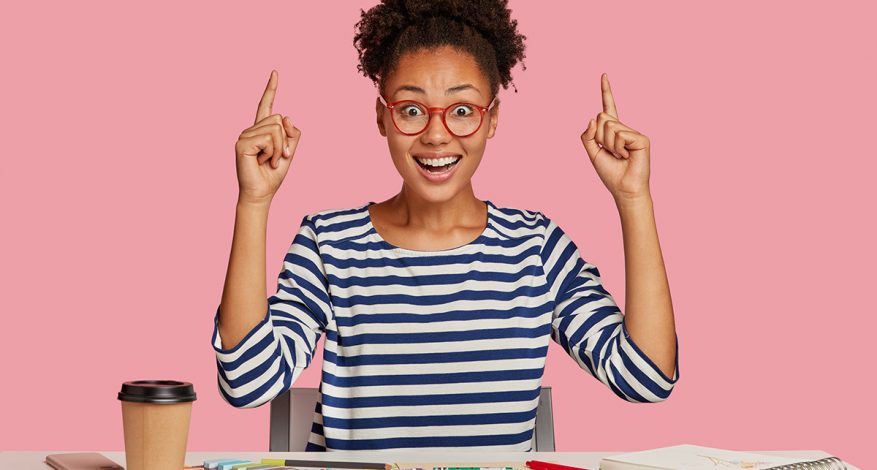Creating an outlet for self-expression allows you to
stretch your thinking and broaden your worldviews.
–Shonelle George
What makes an individual creative? The prevailing belief that creativity is just for gifted people who possess magical powers assigned from birth makes those who do not fall into this category predestined for doom. Allow me to put this misconception to rest. Creativity literature offers a broader context that creativity is essentially an attitude (Ivcevic & Brackett, 2015). Psychologist Robert J. Sternberg adds some value to this narrative. In answering the initial question of what makes an individual creative, Sternberg suggests that creative people are:
- non-conformists
- consistently pay attention to their interests
- driven by their creative pursuits
- demonstrate a willingness to take risks and criticism for the benefit of enhancing their creative work (Sternberg et al., 2004).
Based on this notion, we are not doomed after all. Our ability to problem-solve and make decisions to improve the quality of something makes us creative. Simply put, creativity is not only limited to artistic abilities. The psychology of creativity is centered on the development of problem solving and decision making skills.
Beghetto and Kaufman (2007) argue that creativity can be connected possessing an intrinsic motivation to complete a task. Most creative people love what they do and demonstrate a great deal of passion for the work. While it is not always easy to find what you love to do, it is essential to explore until you find the thing, activity, person, or interest you enjoy. Creative people love what they do, and because of this love, they bring into their spaces of influence:
- more innovation
- stronger problem-solving skills
- decision-making abilities.
Creativity can influence the decisions we make and the solutions we offer to problems we encounter (Sternberg et al., 2004). So, what are ways that we can foster and enhance our creativity:
- Grant access for self-expression. Journaling, painting, drawing, building projects are all practical ways for self-expression while fostering creativity. Sometimes we do not have the words to explain how we feel, yet a “picture is worth a thousand words.” Children adapt their creativity in a way that sometimes makes it difficult to identify; this is primarily due to their bottom-up processing. Children have fewer preconceived notions; they see things as they are. This requires caregivers to create opportunities to engage children by providing more outlets for self-expression. Art and dance are therapeutic for children providing them a safe space to express their feelings. It is never too late for adults to engage in self-expression through art, music, dance, and food. Our self-expressions can be divergent; you do not always have to agree. Embrace different opinions, engage in conversations that challenge your thinking, allow you to unpack your privilege and biases, and embrace your truth.
- Engage in things you love. When we love something, we often make more investments in that thing. Creativity produces favorable outcomes when passion is present; thus, for the individual who wants to enhance their creativity, love cannot be neglected from the process. Engage in positive and healthy activities that grow you and build your self-worth. When we understand our worth, we are less likely to allow others to victimize, disempower, and devalue our sense of self. Love empowers, liberates, and grants us the freedom to explore who we are and how we choose to express our creativity.
- Nourishing your creativity. Internal conditions (self-concept) influence our ability to think creatively. Accepting ourselves as worthy, valued, important, and loved, we send self-acceptance and optimism messages to our brains. Therefore, when we experience threats (stressors) to our wellness, we can exercise more constructive and effective ways to problem-solve. The ability to practice positive self-talk and self-acceptance may contribute to good health and increased creativity. Similarly, spending time in circles or spaces with people who demonstrate empathy and are non-judgmental creates an avenue for increased productivity and creativity.
- Develop your mental process. Playing board games and solving puzzles are practical tools that help to improve cognitive processing and problem-solving skills. Substantial cognitive processing is evident in foresight. So rearranging one’s schedule to control for inefficiency demonstrates one’s ability to think critically about oneself. People who are short-sighted in their self-judgments and perceptions of abilities create roadblocks to problem-solving. The act of exercising creativity involves being able to have a greater understanding of problems and how to develop solutions that work.
- Foresight. Foresight helps us to create long-term and sustainable solutions, and involving others in the process, makes problem-solving more attainable. In a study on spatial narratives as a framework for augmenting creativity in foresight-based learning systems, researchers found that participants who demonstrate creativity possess a great deal of foresight that supports holistic learning and helps gain greater motivation, engagement, and performance (Woodgate, 2019). This means creative individuals take time to think ahead, foresee threats, and create a strategic plan to address challenges when they arise. Adults should engage children in real-life problem solving and decision making. For example, if your child says that no one wants to play with him/her at the playground. How might you engage this child in problem-solving? First, begin by affirming the child then ask for suggestions of what the child might do; this will grant the child an opportunity to explore various solutions. Thus, with support from you, the child will engage in critical thinking and problem-solving, which are byproducts of creativity.
- Create an environment that fosters creativity. Empirical research into the environmental determinants of creativity explores the importance of family background and climate, parenting style, models and ideals, games, and access to childhood opportunities (Peter-Szarka, 2012). Therefore, home environments must celebrate innovation and creativity. Simple activities like:
- covering the walls with chalk paint
- painting and drawing
- sculpting an image
- writing your feelings on sticky notes to post in your daily emotional check-ins
- using calming colors (pastels yellow and green) around the house, foster an environment of creativity.
“I believe creativity is part of what it means to be human. We all have it. Most of us need to fulfill more of it.” —Mark Runco, E. Paul Torrance Professor of Creativity Studies, University of Georgia
References
Beghetto, R. A., & Kaufman J. C. (2007). Toward a broader conception of creativity: A case for “mini-c” creativity. Psychology of Aesthetics, Creativity, and the Arts, 1(2), 73–79. https://doi.org/10.1037/1931-3896.1.2.73
Ivcevic, Z., & Brackett, M. A. (2015). Predicting creativity: Interactive effects of openness to experience and emotion regulation ability. Psychology of Aesthetics, Creativity, and the Arts, 9(4), 480–487. https://doi.org/10.1037/a0039826
Peter-Szarka, S. (2012). Creative Climate as a Means to Promote Creativity in the Classroom. Electronic Journal of Research in Educational Psychology, 10(3), 1011–1034.
Sternberg, R. J., Grigorenko, E. L., & Singer, J. L. (Eds.) (2004). Creativity: From potential to realization. Washington, DC: American Psychological Association
Woodgate, D. (2019). Immersive spatial narratives as a framework for augmenting creativity in foresight-based learning systems. On the Horizon, 27(2), 57–71.
 SHONELLE
SHONELLE
Shonelle George is a clinical psychotherapist. Her clinical orientation is focused on allowing individuals to delve beneath the surface of their problems and emotions to uncover the conflicts that prevent them from living their best lives. She also believes in an integrated approach to addressing challenges to wellness. She is passionate about advocating for women and girls, which has allowed her to create psychoeducational and socioemotional workshops that focus on self-esteem/self-concept, relational trauma, anxiety, relationships, stress and coping, and mindfulness meditation. Shonelle is an international workshop presenter, motivational speaker, blogger, and currently serves as the public affairs and media director for 4 Real Women International, Inc. As an advocate, she believes that everyone can become agents of social change in their spaces of influence.
